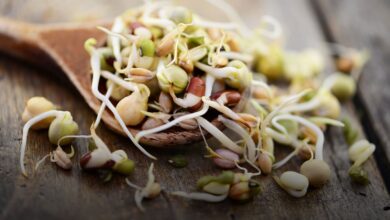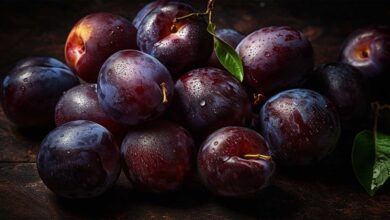Health benefits and delicious recipes

Beets were first used as a medicinal plant, and since the 19th century, beets, with their beautiful purple color, have become a delicious vegetable. It is its fleshy root that we appreciate most in salads during the summer. It has this beauty, this texture, and this taste of its own, but not only that: it also has many nutritional benefits.
The origin of the word comes from another plant, chard (or chard), which is also grown for its leaves, and rave, from the suffix referring to its edible roots. It is said to come from the surroundings of the Mediterranean Sea. To grow well, they are planted from mid-March to be exposed to sunlight for about 6 months. It is then harvested before the first frost to add color and warmth during the winter.
Choosing the right beets
Beetroot is an incredibly versatile plant that can be used for culinary, industrial and agricultural purposes. There are three types of beets that can be distinguished: vegetable, sugar and fodder.
Vegetable garden
It is she who easily finds herself on our plates. In market stalls, these round black beets, very soft and sweet in the mouth, are generally used as an appetizer. There are many varieties, but they remain less consumed and less available: golden yellow burpee, bi-colored Shioggia and so on…
Sugar shaker
White in colour, once harvested, sucrose-rich sugar beets undergo a complete conversion process to become molasses, biofuel or powdered sugar in all its forms.
Fodder
It is mainly intended for livestock feed, and is also used as fertilizer.
To choose good beets, they must be firm, with a beautiful color, without any brown spots, blackness, or bumps. The leaves should be very green and slightly moist. Final tip, small and medium-sized beets are generally better quality than very large beets, sensory-wise. Its organic version is interesting and should be preferred when possible.
Discover its benefits
Among nature's treasures, he is undoubtedly one of them.
- Beetroot is a vegetable that is slightly sweeter than others: between 7.5 and 9 grams of carbohydrates per 100 grams. Its energy value is 40 calories per 100 grams on average. Like most plants, it provides little protein and little fat.
- It is a source of fiber which makes it interesting as part of a weight loss or diabetic diet. Added to this is the antioxidant lipoic acid, which can help regulate blood sugar levels and reduce insulin resistance. Its content is 2.5 grams of fiber on average per 100 grams, which is also beneficial for taking care of intestinal transit. Especially since most of them are insoluble, they are called soft and therefore digestible.
- Among the antioxidants, beets contain many of them. There are flavonoids and vitamins A and C. Others are very specific, such as betalain. This concentration of compounds is exceptional and explains its special purple appearance. It is one of the foods richest in antioxidants.
- In addition to vitamin A, which is excellent for the skin, bones and eyes, or vitamin C, beets are also a source of folic acid. Vitamin B9 is essential for good cell health and proper growth of the fetus.
- It is full of minerals such as potassium and manganese.
- It contains nitrates, which convert to nitric oxide (NO) upon contact with salivary bacteria: a valuable health benefit. It is one of the greatest sources of food.
- Its leaves are rich in iron, calcium, magnesium, copper, vitamin B and vitamin K.
However, people prone to kidney stones should avoid taking it. In fact, beets are also rich in oxalate which can increase its formation.
Anti-inflammatory, immunostimulant, anti-aging, preventive against some types of cancer and cardiovascular diseases, supports brain function, recommended during pregnancy, ideal for athletes and the elderly, beets also have a detoxifying effect that is beneficial to the body. All these properties make it a recognized superfood today.
Can beets help prevent certain types of cancer?
Many beet components have anti-inflammatory and antioxidant effects. It can help strengthen the immune system and prevent the growth and spread of cancer cells by protecting the body from free radicals that attack our cells and accelerate their aging.
This root vegetable provides a large number of beneficial substances such as flavonoids, unique betalains, its pigment origin, manganese, vitamin A and C. More studies are needed to fully understand the potential benefits of beets, especially against the pancreas, breast, stomach, and irritable bowel syndrome. Lung and colon cancer.
Are beets good for blood circulation?
The answer is yes! Beets contain potassium, a mineral essential for good cardiovascular health, nitrates, antioxidants and iron (concentrated in the leaves). They promote vasodilation, improve blood circulation and lower blood pressure.
- These benefits help support liver function, to better eliminate waste and toxins.
- Among athletes, its juice is highly appreciated before exercise: it contributes to good muscular performance thanks to enhanced blood flow and can help progress during short, intense or endurance efforts, according to several studies.
- By improving brain oxygenation, these vegetables also become a cognitive ally that can help reduce age-related degenerative dementia such as Alzheimer's disease.
- As for sexual health, it is also interesting to adopt it as part of a balanced and varied diet, to take care of sexual desire and reduce erection problems.
How to store beets?
Beets can be preserved in different ways.
- Whether raw or cooked, beets' favorite place is at the bottom of the refrigerator, in the vegetable drawer. Fresh beets have a limited shelf life and should be consumed within 3 to 5 days if cooked, and 7 to 15 days raw. It is recommended to keep it cool in a well-ventilated bag.
- It is one of those vegetables that is widely canned, cut into cubes, and widely served in this form commercially. For a “homemade” version, they can be picked whole and then sterilized in a bowl with vinegar and spices. From a taste point of view, the experience is surprising. Shelf life: 1 to 3 years, make sure to close the jar properly after sterilization and keep it in a cool, dry place. Once the can or jar is opened, it will keep for 3-4 days in the refrigerator.
- This cooked and vacuum-packed method gives the opportunity to consume it all year round. It is advisable to respect the expiry date (DLC) indicated on the packaging, which generally lasts for 6 months.
- Fermentation is also a popular method where beets are cut, then placed in a bowl with salt, water and herbs, and left to ferment for several weeks. For a pickle style flavor, this method is perfect. Fermented beets will keep for 12 to 18 months, and 1 to 3 months once an airtight storage container is opened.
- Beets can also be dried outdoors or using a food dehydrator, then stored in airtight containers, protecting all their nutrients for several years. To rehydrate them if necessary, simply immerse them in hot water when preparing them.
- They also freeze well, raw or cooked. Beets can be kept in the freezer for an average of one year. Once thawed, they are best eaten within 2-3 days.
Cooking beets
She has a knack for pushing creativity. In the kitchen, beets can be used in thousands of ways to delight the palates of young and old alike.
As an appetizer
In potato chips, in pickles, in a hummus spread, in a cup with cream cheese or avocado, or even marinated and served on skewers. Beets are a healthy way to snack and share before a meal.
entrance
Raw and grated or cooked and diced for colorful summer salads, all spices can pair well with beets. It can replace classic tomato mozzarella or add flavor to colorless mayonnaise from hard-boiled eggs. It goes perfectly with scallops in a filet for example. It can also be served in soup or gazpacho. It is also a traditional recipe in Russia and Eastern Europe: a soup called borscht.
As a dish
Beetroot has the great advantage of bringing aesthetics to the dish. Its unique color gives personality. Roasted with other root vegetables (carrots, parsnips, potatoes, etc.), it can be accompanied by any meat or fish. It may also include a falafel recipe or homemade harissa. Another idea: add a small piece of beetroot to the pasta or rice cooking water to color it!
In juice
A simple way to benefit from its nutritional properties and get rid of toxins while keeping the body hydrated. Beetroot juice is prepared using a juice extractor. Here too, everyone is free to choose the single-ingredient option or mix it with other fruits, vegetables or spices, such as ginger. It therefore allows excellent assimilation of vitamins and energy recharging thanks to natural sugars.
The great possibilities for gourmet recipes and the many benefits of beets have everything to convince. Adopting this vegetable means seeing life in pink.
How to prepare and cook beets?
If beets are purchased raw, start by cutting off the tops. The skin should be kept for cooking purposes. It actually acts as a natural flake that enhances maximum flavours, protecting their color and nutrients. After cleaning it well and ridding it of any cooked dust:
- In the oven: from one hour to one hour and 30 minutes at 180 degrees Celsius. This cooking method gives it a delicious braised taste.
- In water: 2 to 2.5 hours, over medium heat, in salted water;
- Steam or pressure cooker: 25 to 30 minutes.
To know if it is cooked enough, the skin should come off easily. They can also be eaten raw, grated or chopped to add flavor to raw vegetable salads. If the cooked beets are already peeled, pre-packaged and commonly consumed, they are ready to use. It does not require any special preparation, other than using it according to the chosen recipe.
Health benefits and delicious recipes


